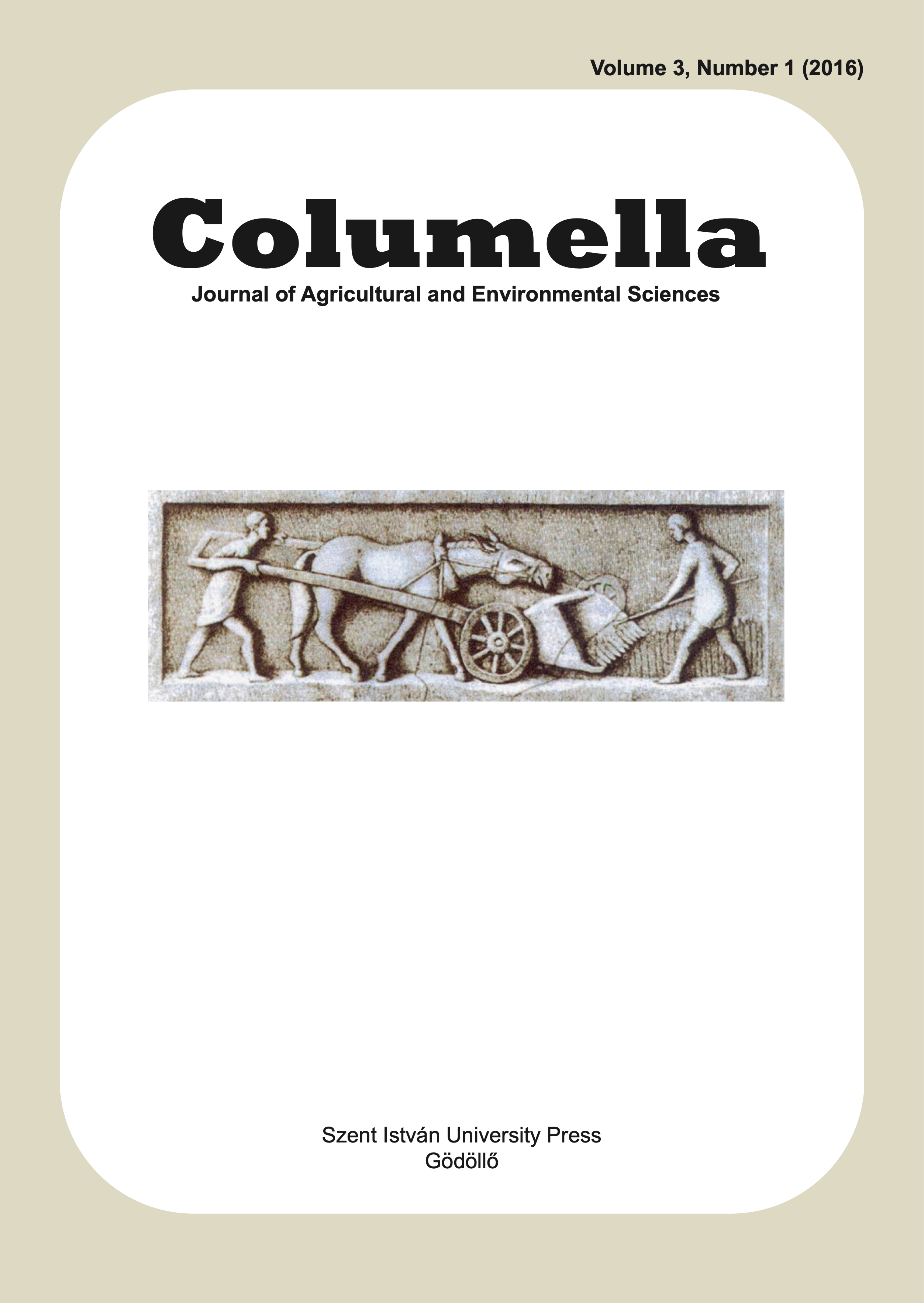Effects of the nutrient supply and sowing time on the yield and the phytopathological traits of winter oilseed rape (Brassica napus var. napus f. biennis L.) on chernozem soil
DOI:
https://doi.org/10.18380/SZIE.COLUM.2016.3.1.9Keywords:
oilseed rape, fertilization, sowing time, yield, diseasesAbstract
We have studied the fertilizer response of oilseed rape on the chernozem soil in Eastern Hungary in a three-year experiment (years of 2009/2010, 2010/2011, 2011/2012) in two sowing times (end of August, middle of September). Our research results proved that oilseed rape has high fertilizer (N+PK) demand. In the experiments, N = 210 kg ha-1 +PK proved to be the optimal fertilizer dose. The yield increasing effect of fertilization was 800 to 1300 kg ha-1, depending on the cropyear. The maximum yield (5000 kg ha-1) was obtained in the cropyear of the less infection. The excellent natural nutrient providing ability of chernozem soil was confirmed by the high yield level (3000-4200 kg ha-1) of the control treatment (N = 0 kg ha-1 +PK). According to our studies, as an effect of the increasing N doses, the specific fertilization yield surplus of oilseed rape declined (from 19-27 kg/1 kg NPK to 11-12 kg/1 kg NPK). On the other hand, fertilization improved the water utilization efficiency (WUE) of oilseed rape in the experimental years (from 4-8 kg/1 mm precipitation + irrigation water to 11-14 kg/1 mm precipitation + irrigation water). The results of our studies confirmed that the hybrid rape had of excellent adaptation to the sowing time; due to this fact, the yield decrease was minimal (0-270 kg ha-1) in the middle September sowing time compared to the late August one. According to the results of the Pearson’s correlation analysis, strong correlation (0.6*-0.9**) was found between the spring precipitation and temperature and the most important diseases (Sclerotinia, Alternaria, Peronospora, Phoma) of oilseed rape.
Downloads
Published
Issue
Section
License
Copyright (c) 2016 Péter Pepó

This work is licensed under a Creative Commons Attribution-NonCommercial-NoDerivatives 4.0 International License.






